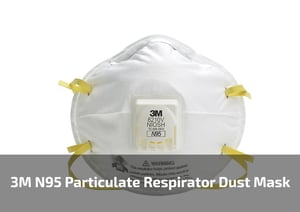Take a deep breath and consider the following: Every worker required to wear a tight-fitting respirator on the job needs a respirator fit test. In the United States and many other countries, respirator fit tests are law. This law even applies to disposable N95 particulate respirator masks. A respirator fit test, typically conducted in a controlled environment, is markedly different than the quick “seal check” performed whenever a worker puts on a respirator.
In the U.S., federal Occupational Safety and Health Administration (OSHA) and state agencies require employers to fit test workers prior to allowing them to wear respirators on the job, and then annually thereafter. Fit testing is required for all respirator use, not just for those working near lead or other hazardous material. Fit testing may be done by a respirator fit-test company, the employer, or certain other third parties. For more information visit OSHA web page Respirator Fit Testing.
Here’s what happens during a typical 15- to 20-minute fit test…
Workers wear the exact same make, model, style, and size of respirator they will be using in the field. They also put on whatever personal protection equipment (PPE) they typically wear (such as prescription glasses, safety goggles, and hearing protection) that might affect respirator fit. Testing begins when the technician places a specialized hood over the worker’s head. While the worker performs normal movements (like turning the head and bending at the waist) the technician sprays a taste agent about six inches (15.2 cm) from the face. If the worker detects the taste agent, the respirator does not fit properly. Alternately, the technician may utilize a machine that measures the actual amount of leakage rather than relying on the worker’s sense of smell.
Not everyone can get a good fit with a specific respirator so if one respirator fails, workers simply try out a different make, model, style, or size until the right fit is found.
Okay, now exhale.
Before starting a lead project, make sure you have your bases covered. Review Sponge-Jet's Deleading and Lead Abatement Industry CYA Checklist below:
Chris Lovelace, Technical Contributor.
Founder of The Lovelace Group, Chris has more than 25 years’ experience and is a nationally recognized leader, educator, and curriculum developer in the field of hazardous materials handling (lead, asbestos, etc.). For more information contact Chris at Chris@thelovelacegroup.com or phone (678) 764-8963.









